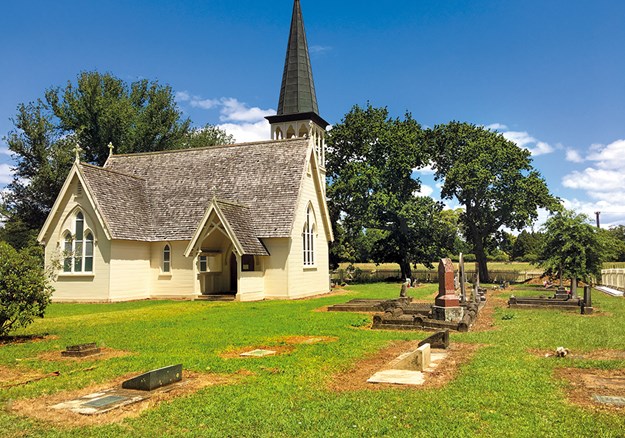 |
|
Missionary Henry Williams built the Holy Trinity Church, at Pakaraka
|
A journey can hold as much interest as its destination. Like many other motorhomers, Bill and I had driven the stretch of SH1 from Hikurangi to Ohaeawai many times without stopping, intent (understandably) on getting to Kerikeri, Paihia or the glorious northern beaches of the Far North. But last month, when we took the time to deviate off the main drag we found a wealth of stories underpinning this colourful corner of New Zealand.
LOOKING BACK
Travelling north on SH1, we first turned off into the almost forgotten town of Hikurangi. Built on a prosperous past of coal mining, timber milling and dairy farming, the township’s economic lifeblood dried up when the new state highway bypassed it. Today it retains a kind of neglected charm and is clearly trying to reinvent its future. At the Miner’s Rest Cafe we found hearty food and good coffee, and next door, the intriguing and well-stocked Village Vintage Treasure.
There are more vintage treasures a little further north on SH1 at Hukerenui where, beside a tired-looking historic tavern, is a lively-looking museum. This houses local farming memorabilia that local man, Jack Morgan, collected from the area he called home for 97 years. Anyone fascinated by tools, cream separators or stationary engines (around 60 of them) could spend a happy hour here. I am not among them, but even so, I enjoyed a brief look. If you wish to stay over, the hotel car park is also a Park Over Property (POP).
CONFLICT AND TRENCHES
A little further on, and hard to miss on the top of a steep hill, is another historic hotel. The Towai Tavern will soon celebrate its 150th anniversary. It was originally built near the old railway station at the base of the hill but in 1933, the whole shebang was pulled on rollers to its new perch. The exercise took three days and rumour has it that the bar never closed. But it’s not the history that has locals and travellers calling in as much as today’s hearty menu, with offerings such as pork sandwiches, pies and mussels galore in fritters, burgers and batter.
For years we had ignored the sign just past Towai that indicates Ruapekapeka Pa, presuming the historic site to be just another terraced hill.
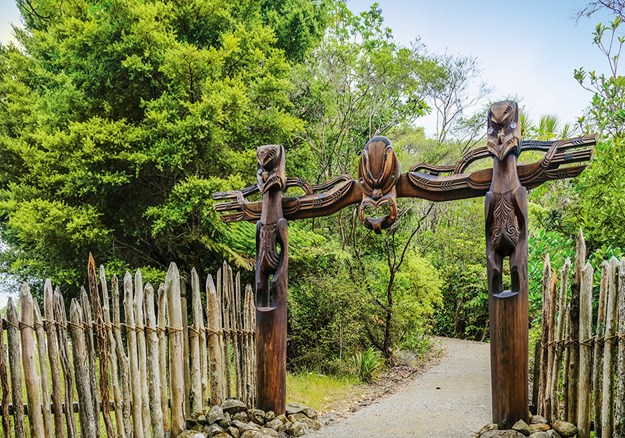 |
|
Entrance to Te Ruapekapeka Pa
|
So much for assumptions. It is 175 years since the significant Ruapekapeka Battle took place on this remote bit of Northland, and among the celebrations marking the event the site has been upgraded. There is explicit signage and a well-formed track that leads from the British encampment on one hill and across a gully to the site of the most heavily defended pa ever built.
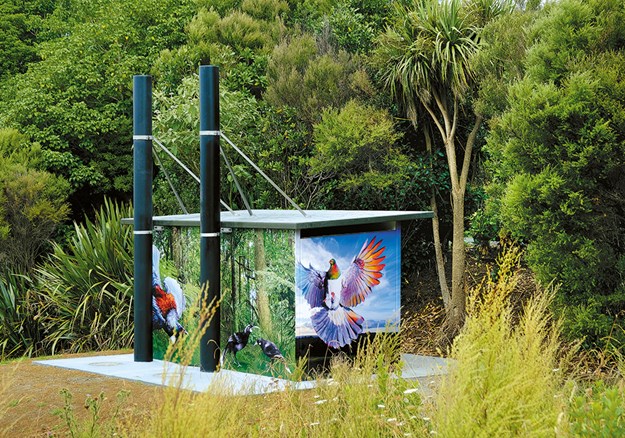 |
|
Toilet art – part of the improvements at Ruapekapeka near the English troops’ encampment
|
I stood where the British troops set up camp, and conjured up what might have been. There would have been few comforts for the 1300 British troops and 400 Maori allies who incredibly had just hauled 30 tonnes of artillery and supplies through 30km of precipitous, bush-covered country. It had taken them two weeks and they must have been exhausted before the battle began. Their commander was the veteran British officer Henry Despard.
On the other hill, Te Ruapekapeka Pa’s garrison, outnumbered four to one, was commanded by Rangatira Te Ruki Kawiti, who was joined by the influential Rangatira Hone Heke. Their ingeniously fortified pa was peppered with tunnels, rifle pits and trenches, and surrounded by a strong palisade.
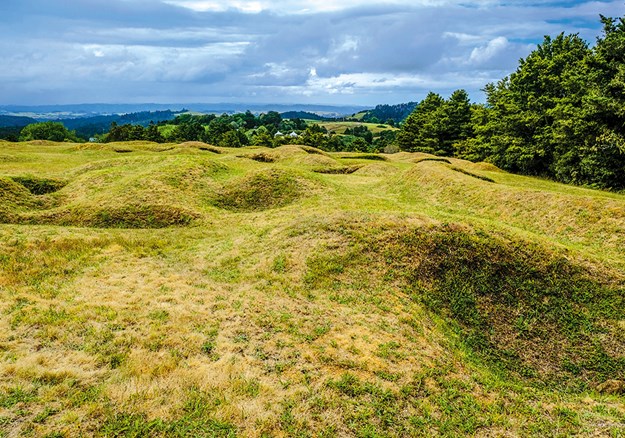 |
|
An impressive jumble of tunnels, trenches and mounds still pockmarks the battle site at Ruapekapeka
|
After two weeks of British cannonballs ricocheting off the mark, the palisade was finally breached on 10 January 1846. But when the marauders got to it they found only Kawiti and a handful of his men in residence. The rest had melted into the dense bush, where Kawiti and the others soon joined them. Aware of ambush if they followed, the British soldiers refused to be lured into the forest and so, with hardly a whimper, the conflict came to an end. A dozen British had been killed, and many more Maori.
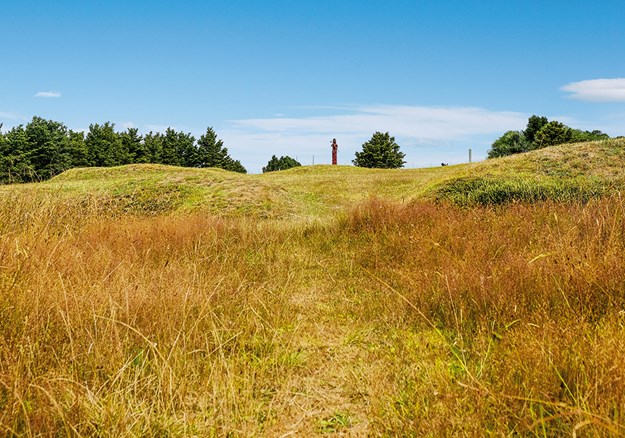 |
|
The pou at the apex of Ruapekapeka Pa, as seen from one of the fortification trenches
|
The impressive jumble of tunnels, trenches and mounds still pockmarks the battle site. But the scars that remain are not only on the land, as the battle’s outcome remains contentious. Despard boasted that taking the pa was a brilliant success; others argue that Kawiti’s withdrawal was organised and he therefore strategically won the war. No one disputes, however, that the Battle of Ruapekapeka brought the northern hostilities to an end.
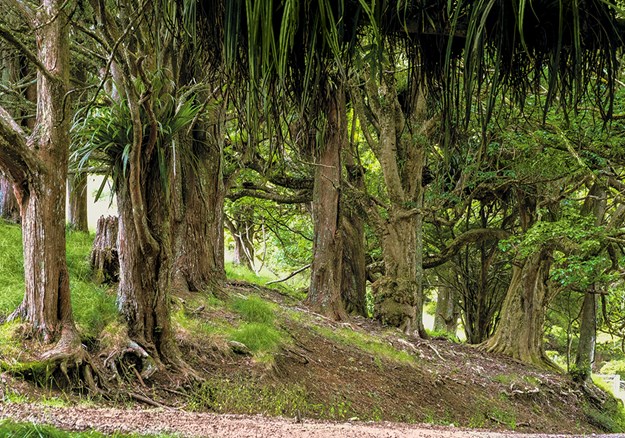 |
|
Visitors can walk through the old forests that bore witness to the Battle of Ruapekapeka
|
FAMILY CONNECTIONS
Five kilometres south of Kawakawa there is a strong family connection to the famous chief, at the Kawiti Family Caves. Not long ago I was shown through this subterranean world by a relaxed and charming guide, Te Paihere.
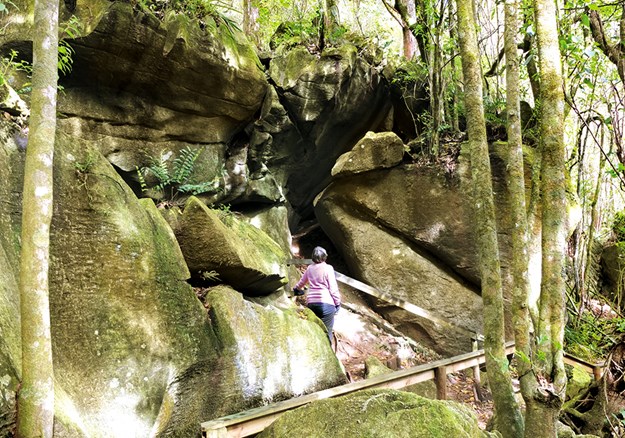 |
|
The strange rock formations that form the roof over Kawiti caves
|
“I am the great-granddaughter of Te Tawai Kawiti,” she’d told me. He began taking people through the caves in the 1950s and had great knowledge.
With the lamp held high, Te Paihere led me into the depths of this extraordinary place of lime-drizzled pillars, dripping caverns, bulging stalactites and crystallised curtains of white limestone rock. We followed the course of a stream that murmured from the depths and at various points, Te Paihere paused and turned off the lamp, to reveal above us the starstudded ceiling where the glow worms lent faint light to the eerie blackness. The return walk was above ground over the roof of the caves, through native forest that wove around giant limestone rocks.
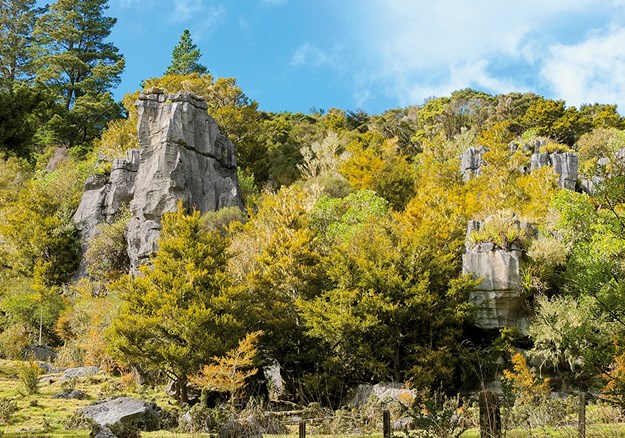 |
|
Kawiti caves above ground
|
After a takeaway lunch at the highly rated, hole-in-the-wall Indian Restaurant at the southern end of Kawakawa, we skipped through the town because I was now focused on a theme – to delve into this part of Northland’s past through the structures that are still present.
MAKING PEACE
Among the features that characterise the Far North are the many small, historic and charming churches that dot the landscape. On SH1 just south of Ohaeawai, is the much-photographed Pakaraka Anglican Church of the Holy Trinity. It is not as large as its name might suggest, but its architecture and the setting among oak trees are as captivating as a cathedral. Gothic Revival in style, its slim, elegant steeple points like a sharpened pencil to the sky. In the graveyard, Maori and Pakeha are buried, but the most outstanding graves are those of the Reverend Henry Williams and his wife Marianne. Henry was a pivotal figure in the early days of missionary zeal. In the turbulent times of the mid-1800s, much of his energy was spent befriending Maori and fostering peace – a pursuit for which he was wrongly charged with treason by Sir Governor Grey. After this damaging allegation, he moved to Pakaraka, to build the church and continue his work. Perhaps his most fitting tribute is that in 1867, on the day he died, two local tribes had planned a pitched battle to settle a land dispute. Such was the old man’s mana that when the warriors heard the news of his demise, both sides downed weapons and left the battle site to join the mourners.
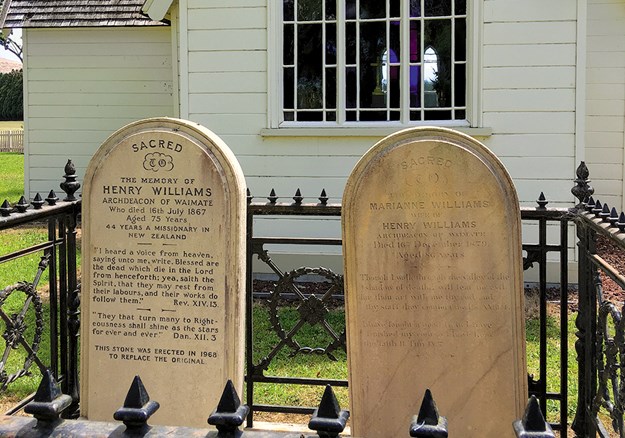 |
|
Gravestones of Reverend Henry Williams and his wife Marianne at the Holy Trinity church
|
From here the unprepossessing village of Ohaeawai lies at the crest of a long hill. Blink and it’s gone, but about 10km further there’s a lonely little church set back from the road. Showing a few signs of neglect, it indicates the site of an equally important conflict which had occurred before the Battle of Ruapekapeka, when the ambitious Despard had targeted Hone Heke and Kawiti’s Ohaeawai pa. Two days of bombardment did little damage. Despard recklessly ordered an assault on the pa instead and seven minutes later, 33 of his men were dead, 66 were casualties and his British pride was deeply wounded.
MISSIONARY ZEAL
It had also been a big day for us but there was one more connection to make. At the Waimate Mission station on Te Ahuahu Road nearby is a picturesque little church, one of the oldest in the country. Among the historical gravestones in the yard are original wooden markers dedicated to two of the British soldiers killed at the Battle of Ohaeawai.
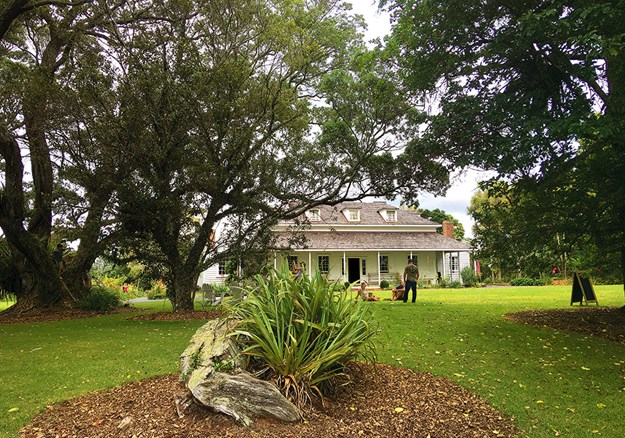 |
|
Waimate Mission House (1832) is the second oldest building still standing in New Zealand
|
Many people ignore the Waimate Mission Station, but it’s an important stop for anyone interested in the region’s early beginnings. Built in 1830, it’s the first inland mission in the country. The lovely Georgian mission house (now the second-oldest building in New Zealand still standing) is primped and cared for, and filled with missionary memorabilia and period furniture.
Charles Darwin visited the mission in 1835. Although he didn’t think much of the rest of New Zealand, this place was very much to his liking: “an English farm of well-dressed fields placed there as if by an enchanter’s wand”, he wrote.
He had no idea of the troubles that were yet to come.
WHERE TO STAY
Cowshed Campground
61 Wallis Road, Kaikohe 0472
Phone: 022 304 0698
Waimate North Showgrounds
Te Ahu Ahu Rd
Waimate
Te Honanga Hundertwasser Memorial Park (freedom camping)
1 Mackereth Lane
Kawakawa
Hikuranui Hotel POP
SH1, Hikuranui
Ludbrook Farm POP
7491 SH1, Ohaeawai 0472
Phone: 09 405 9846
Find out more
ruapekapeka.co.nz
nzhistory.govt.nz
jackmorganmuseum.org.nz
Find motorhomes, caravans and RVs for sale in NZ





